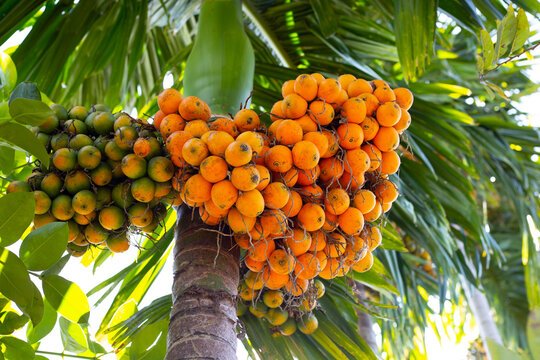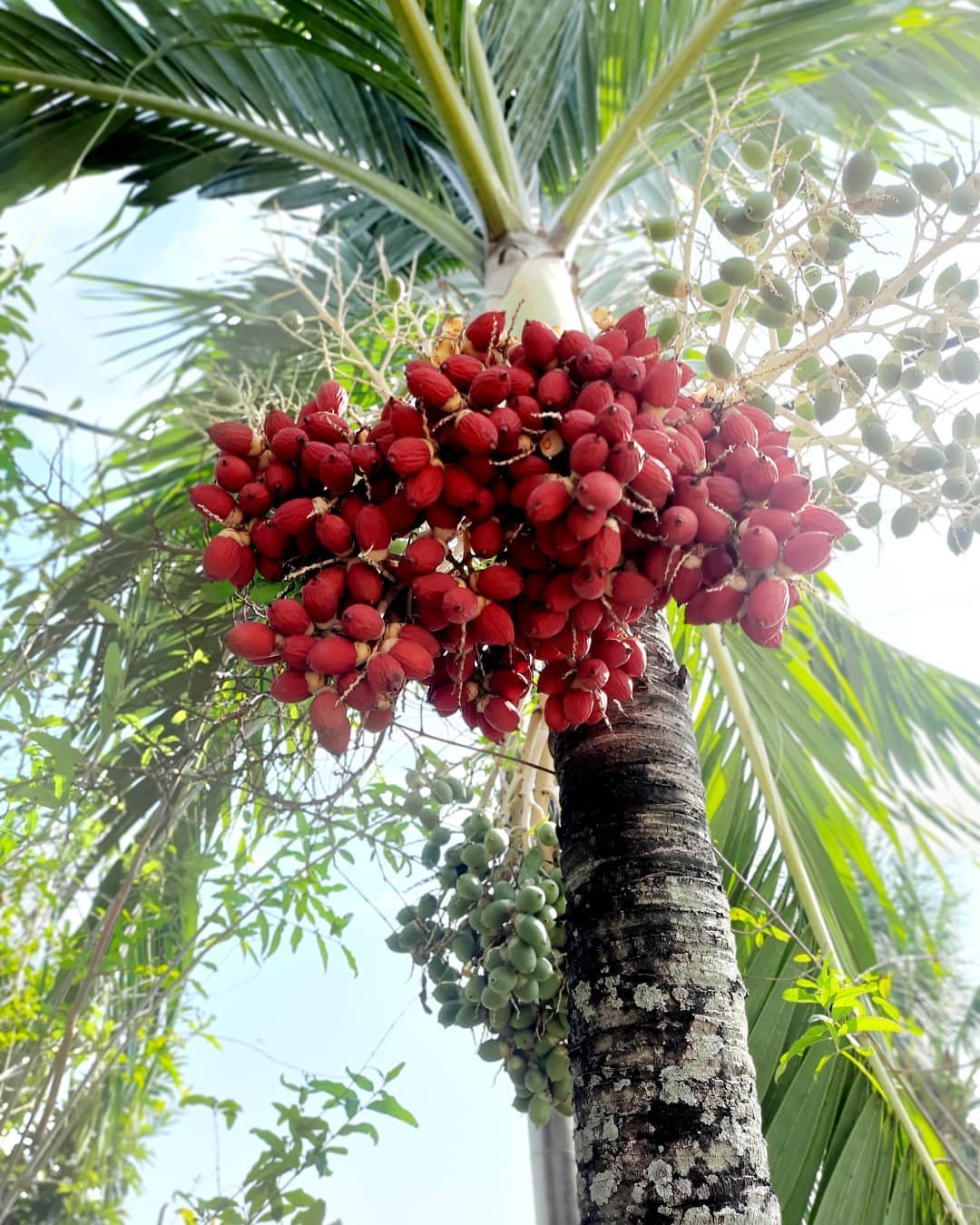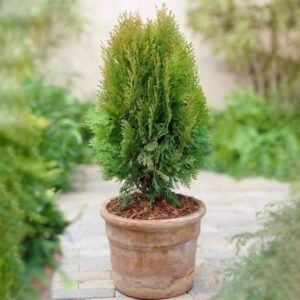Description
Supari Palm (Areca catechu) – A Detailed Description
The Supari Palm, scientifically known as Areca catechu, is a tropical palm species widely cultivated for its seed, commonly known as betel nut or supari in India. This elegant palm is economically and culturally significant in many parts of Asia and the Pacific Islands. It is appreciated for its aesthetic appeal, economic value, and traditional uses. The plant holds great importance in agricultural, medicinal, social, and religious contexts, especially in countries like India, Bangladesh, Sri Lanka, Myanmar, the Philippines, and Indonesia.
Botanical Classification
- Kingdom: Plantae
- Order: Arecales
- Family: Arecaceae
- Genus: Areca
- Species: A. catechu
Common Names
- Supari Palm (India)
- Areca Palm
- Betel Nut Palm
- Pinang Tree (Malaysia and Indonesia)
- Tamul (Assam)
- Kottaypaakku (Tamil Nadu)
Origin and Distribution
The Supari Palm is native to Southeast Asia, specifically the Philippines, Malaysia, and Indonesia, but it has been widely naturalized and cultivated across the Indian subcontinent and the Pacific Islands. Today, major producing countries include India (especially Kerala, Karnataka, and Assam), Sri Lanka, Bangladesh, Thailand, and Papua New Guinea.
Physical Description
Height and Structure
The Supari Palm is a tall and slender palm, typically growing to a height of 12 to 30 meters. The trunk is smooth, ringed with leaf scars, and remains upright and cylindrical throughout its life. The base of the trunk is slightly wider, and as the plant matures, it maintains its elegant, column-like appearance.
Leaves
The leaves are pinnate (feather-shaped) and arranged spirally at the top of the stem, forming a crown. Each leaf is 1.5 to 2 meters long, with multiple narrow leaflets that are bright green and arch gracefully. The petioles (leaf stalks) are relatively short, and the leaves are shed naturally after aging.
Flowers
Supari palms are monoecious, meaning both male and female flowers appear on the same plant. The inflorescence is branched and emerges from below the crownshaft, producing small, cream-colored flowers. Male flowers are numerous and located at the tips of the branches, while female flowers are larger and situated closer to the base.
Fruits
The fruit of the Supari Palm is a drupe – an oval or round nut, about 4-6 cm long. When immature, the fruits are green, turning yellowish-orange or red when ripe. The hard inner seed is the betel nut, which is dried, cut, or processed for various uses.
Cultivation and Growing Conditions
Climate
Supari palms thrive in warm, humid tropical climates. The ideal temperature range is 20–35°C, and the plant requires high humidity (70–90%) for optimal growth. It is sensitive to frost and prolonged dry conditions.
Soil Requirements
Well-drained, fertile loamy soils rich in organic matter are best suited. It prefers slightly acidic to neutral soil (pH 5.5–6.5). Waterlogging or heavy clay soils are detrimental.
Watering and Irrigation
The palm needs consistent watering, especially during dry spells. Adequate irrigation ensures good fruit development. However, overwatering can lead to root rot.
Propagation
Propagation is typically through seeds. Seeds are sown in nursery beds and later transplanted when they are about 6 to 8 months old. It may take 3 to 5 years before the plant starts bearing fruits.
Spacing
In commercial plantations, palms are usually spaced 2.5 to 3 meters apart, allowing proper root and crown development.
Economic Importance
The primary commercial product is the areca nut, used extensively in chewing practices across South and Southeast Asia. It is usually chewed with betel leaves, slaked lime, and sometimes tobacco—a combination known as paan.
Uses of Areca Nut (Supari):
- Chewing product in various forms – raw, boiled, dried, or fermented.
- Ayurvedic and traditional medicine for digestive and oral health.
- Used in religious rituals, weddings, and cultural ceremonies.
- An ingredient in mouth fresheners and herbal formulations.
By-products
- The leaves and stems are used for making plates, baskets, and handicrafts.
- The husk is processed into coir, and the leaf sheaths are used as bio-degradable packaging material.
- Powdered seed and husk are also used as cattle feed or organic manure.
Cultural and Religious Significance
The Supari Palm holds sacred value in Hindu rituals and South Asian traditions. The betel nut is considered a symbol of prosperity, respect, and commitment, used in pujas, weddings, and religious offerings. In some Indian cultures, gifting betel nut and betel leaf symbolizes a formal agreement or greeting.
Medicinal Uses
In traditional medicine systems such as Ayurveda, Unani, and Traditional Chinese Medicine (TCM), areca nut has been used for:
- Treating digestive issues like constipation and indigestion.
- Stimulating the central nervous system.
- Acting as a mild anti-parasitic.
- Strengthening gums and teeth when chewed occasionally.
Caution: Prolonged or excessive use of betel nut is linked to health concerns including oral cancer, gum disease, and addiction, especially when combined with tobacco.
Pests and Diseases
Supari Palms are susceptible to:
- Yellow leaf disease (caused by phytoplasma)
- Bud rot (due to fungal infections)
- Infestation by red palm weevil, mealybugs, and aphids
- Stem bleeding and leaf spot diseases
Proper plant spacing, soil drainage, regular monitoring, and organic or chemical treatments are used for effective pest and disease management.
Environmental Impact and Sustainability
Supari Palm plantations contribute positively to the local ecology:
- Offer shade and shelter for biodiversity.
- Prevent soil erosion due to dense root systems.
- Leaves and fallen parts decompose into organic matter, enriching the soil.
However, over-dependence on monoculture and excessive pesticide use in commercial plantations may pose environmental risks. Sustainable and organic farming methods are increasingly being adopted to balance productivity with environmental health.
Conclusion
The Supari Palm (Areca catechu) is more than just a commercial crop; it is deeply woven into the cultural, medicinal, and economic fabric of many tropical countries. With its elegant form and high utility, it stands as a symbol of tradition and livelihood. As global conversations continue around health, sustainability, and tradition, the Supari Palm remains an important plant worthy of both appreciation and cautious utilization.








 GOLDEN MORPANKHI-PLANT
GOLDEN MORPANKHI-PLANT 

Reviews
There are no reviews yet.